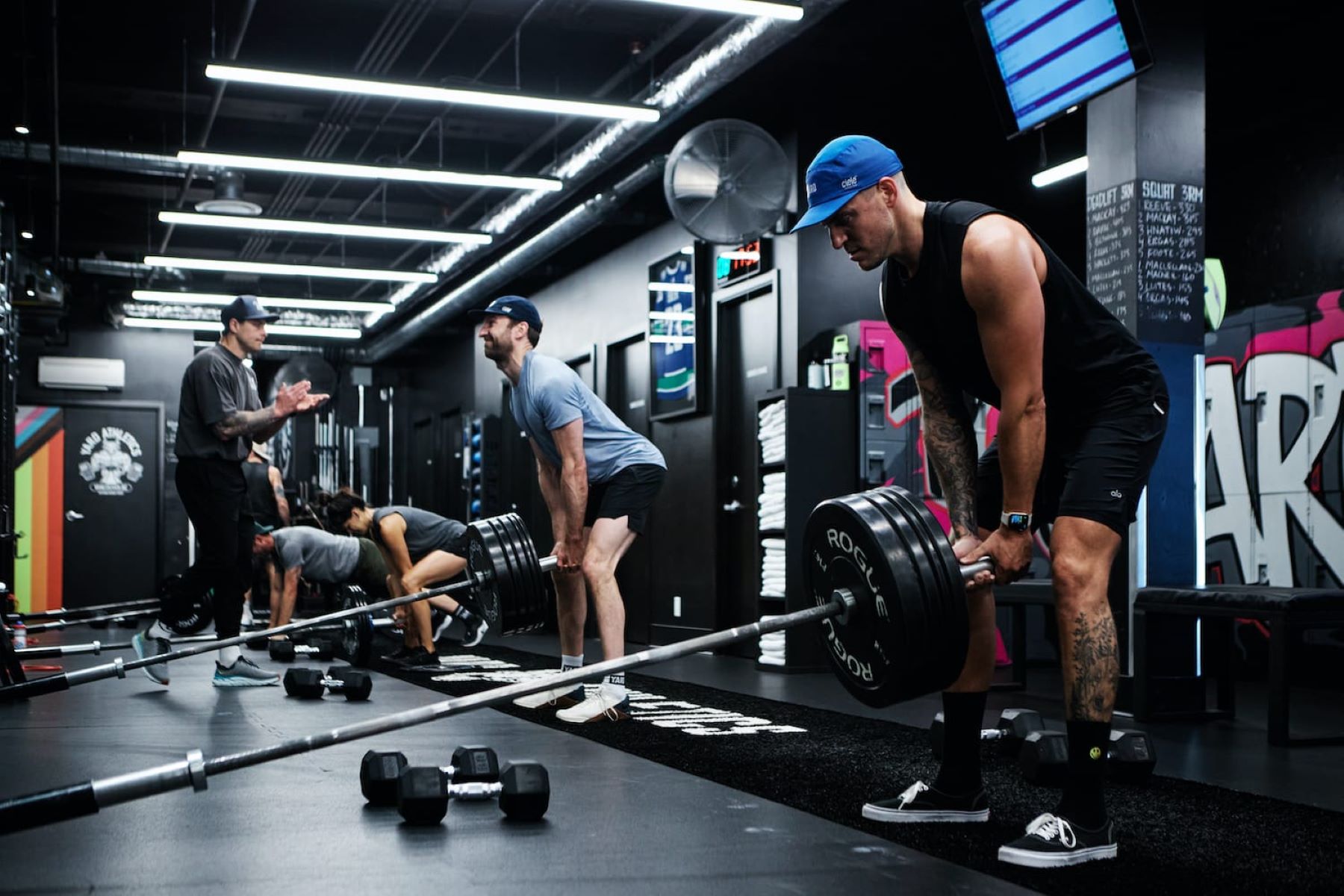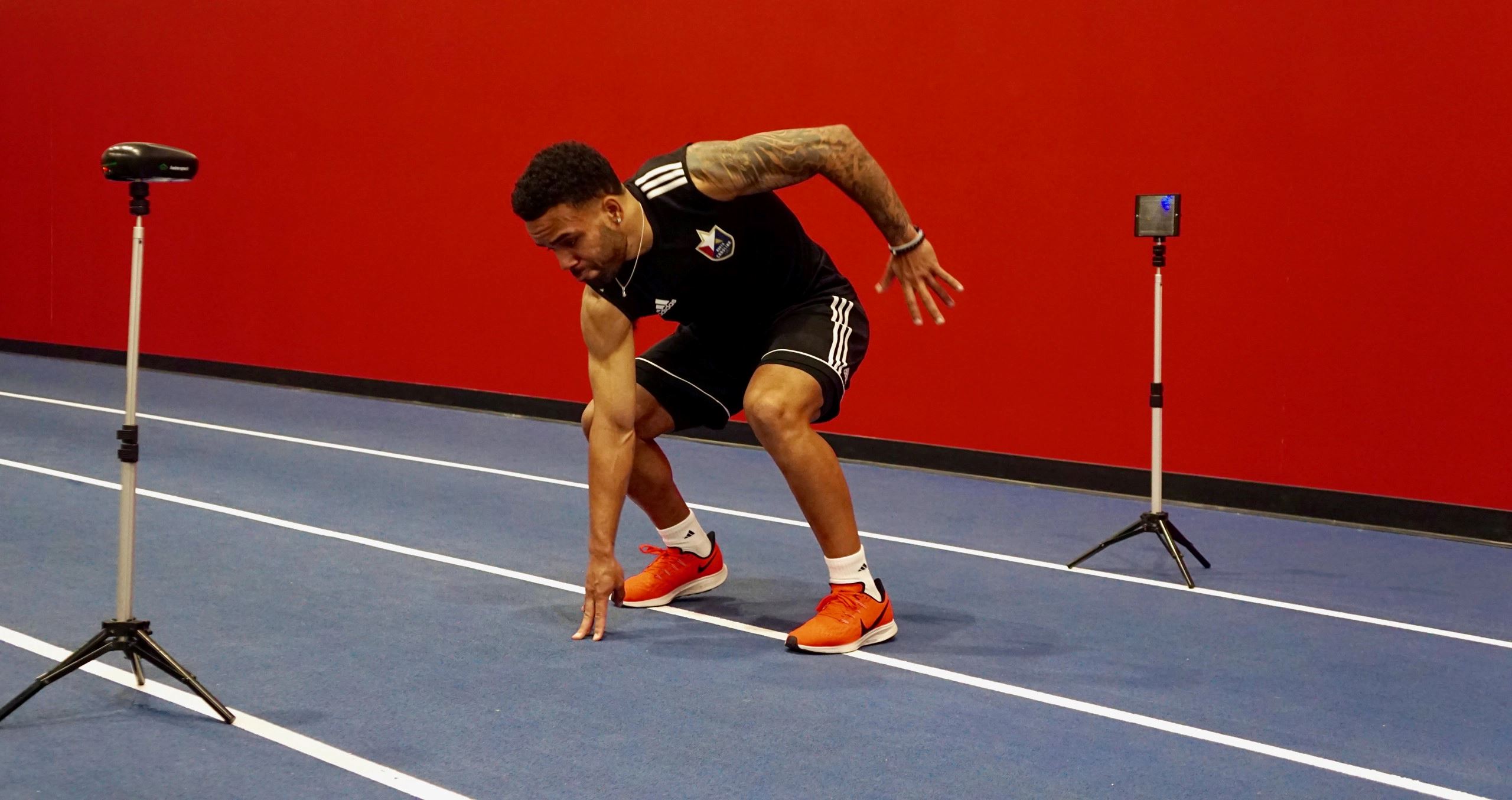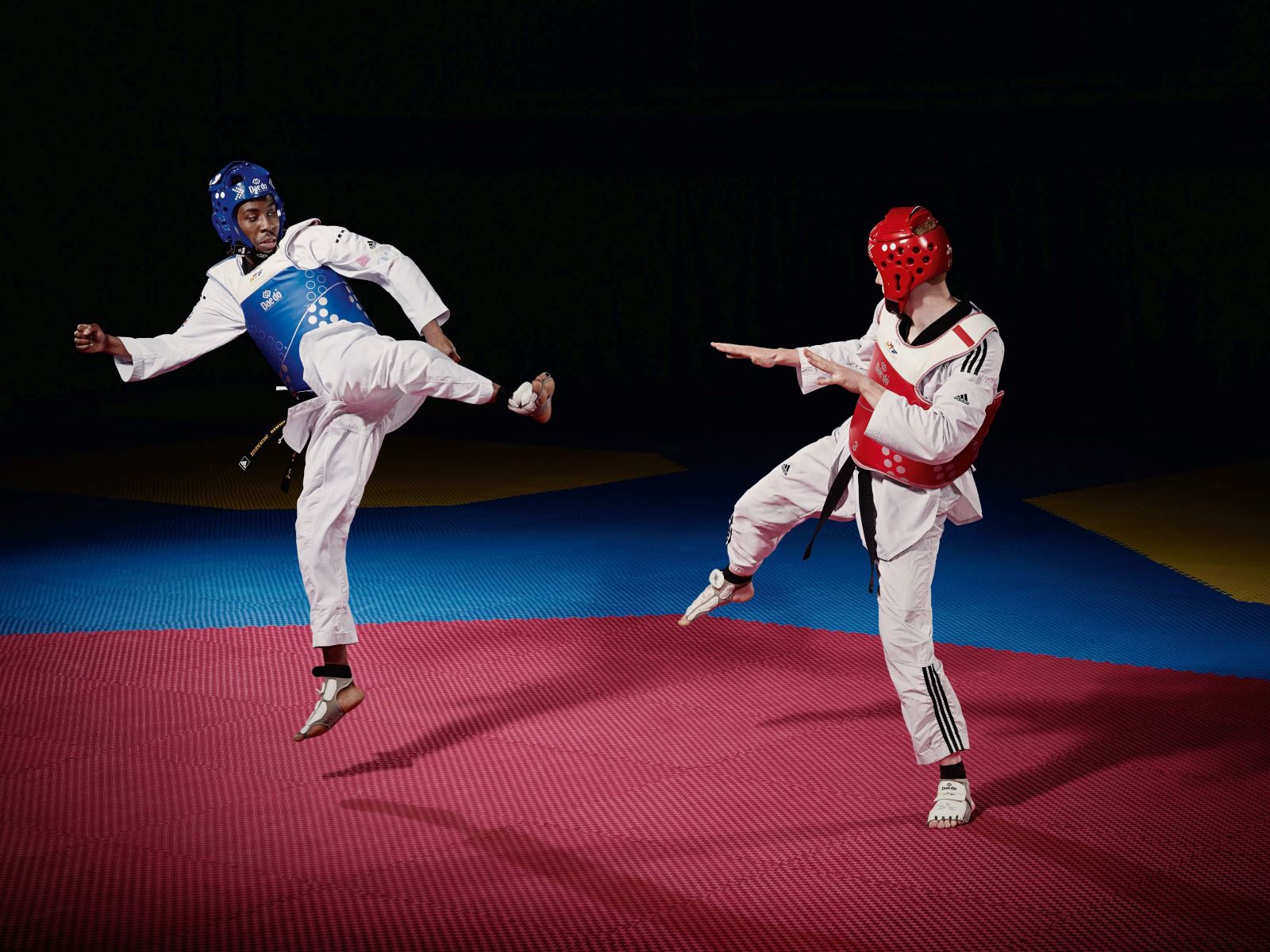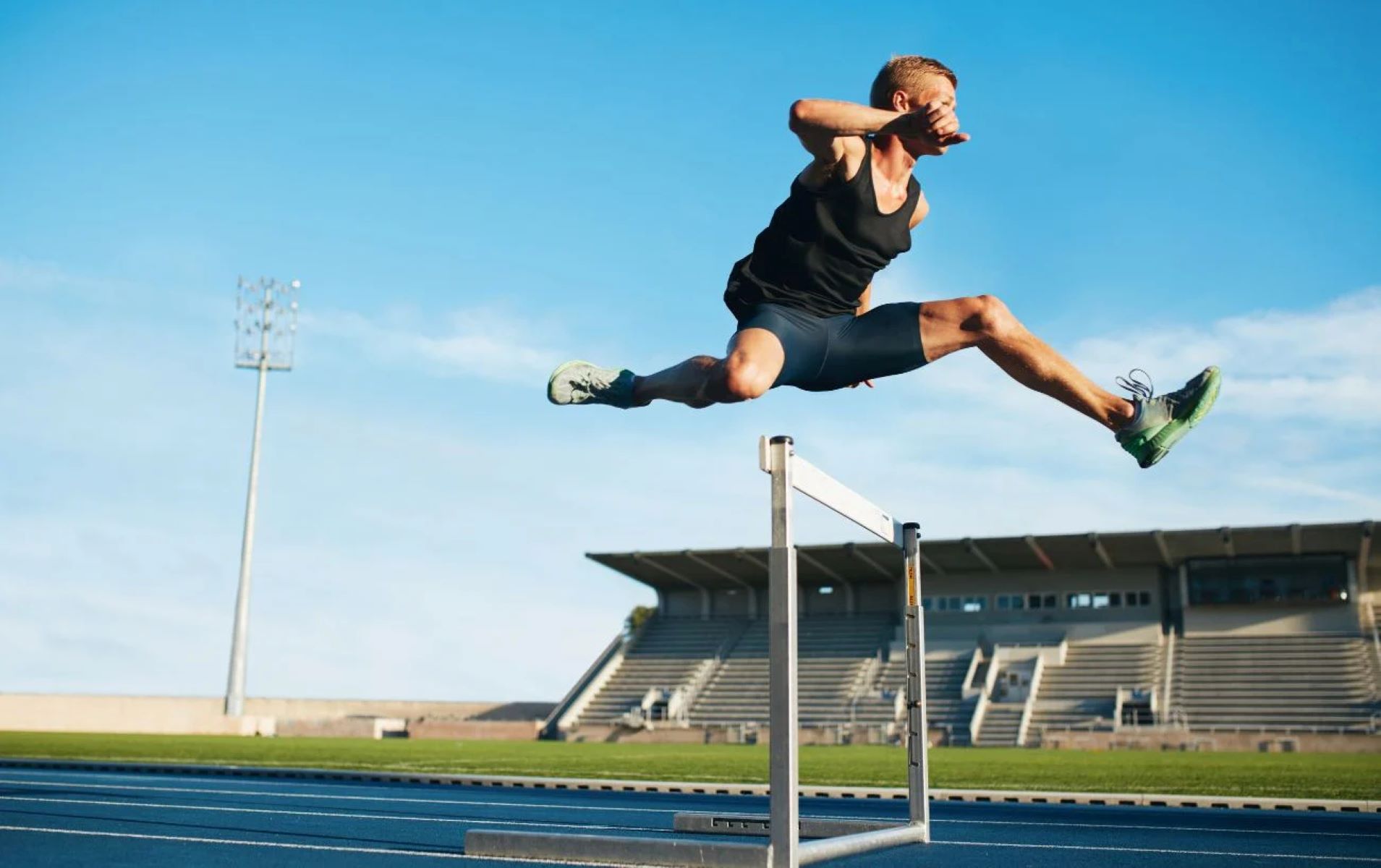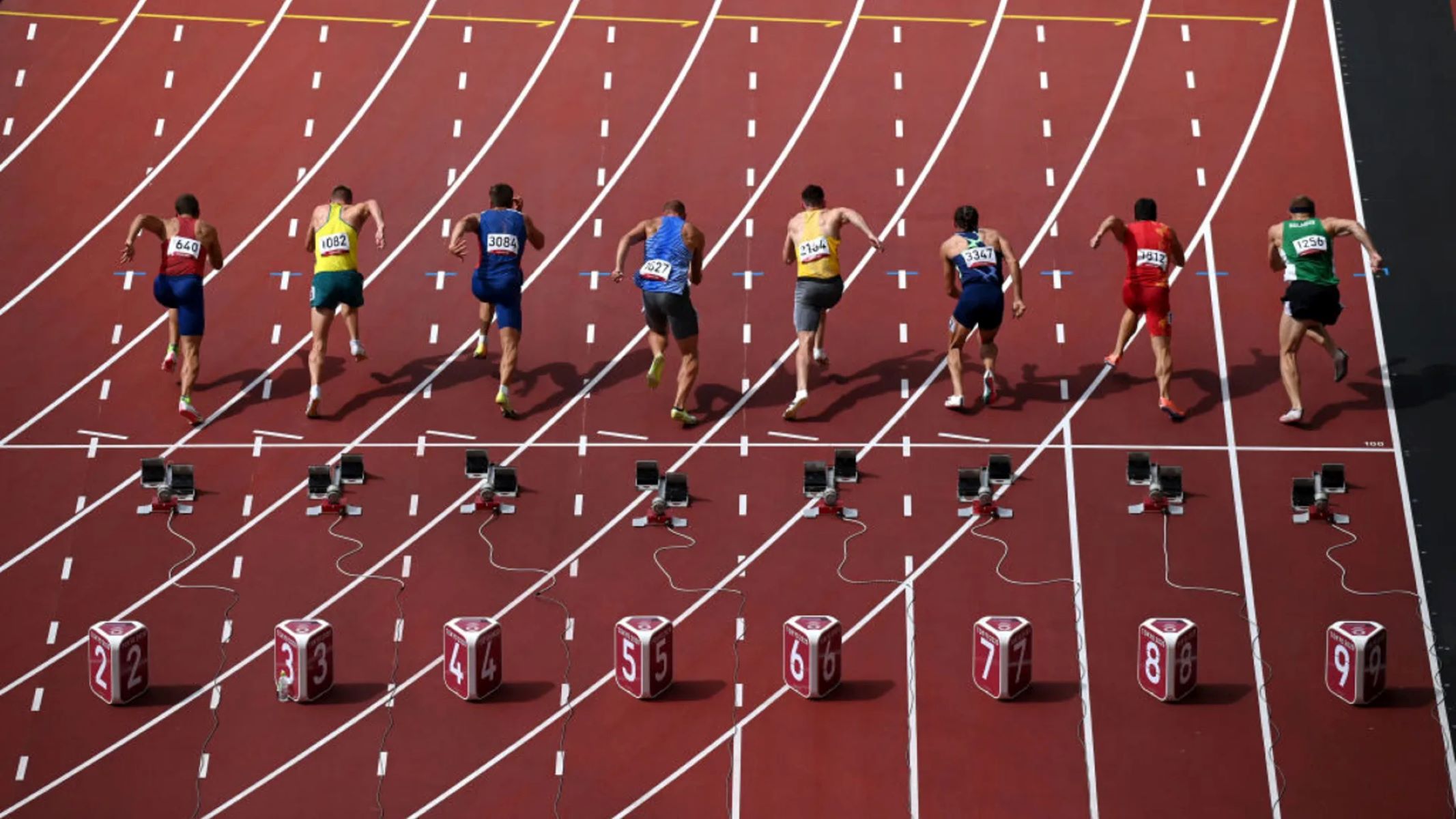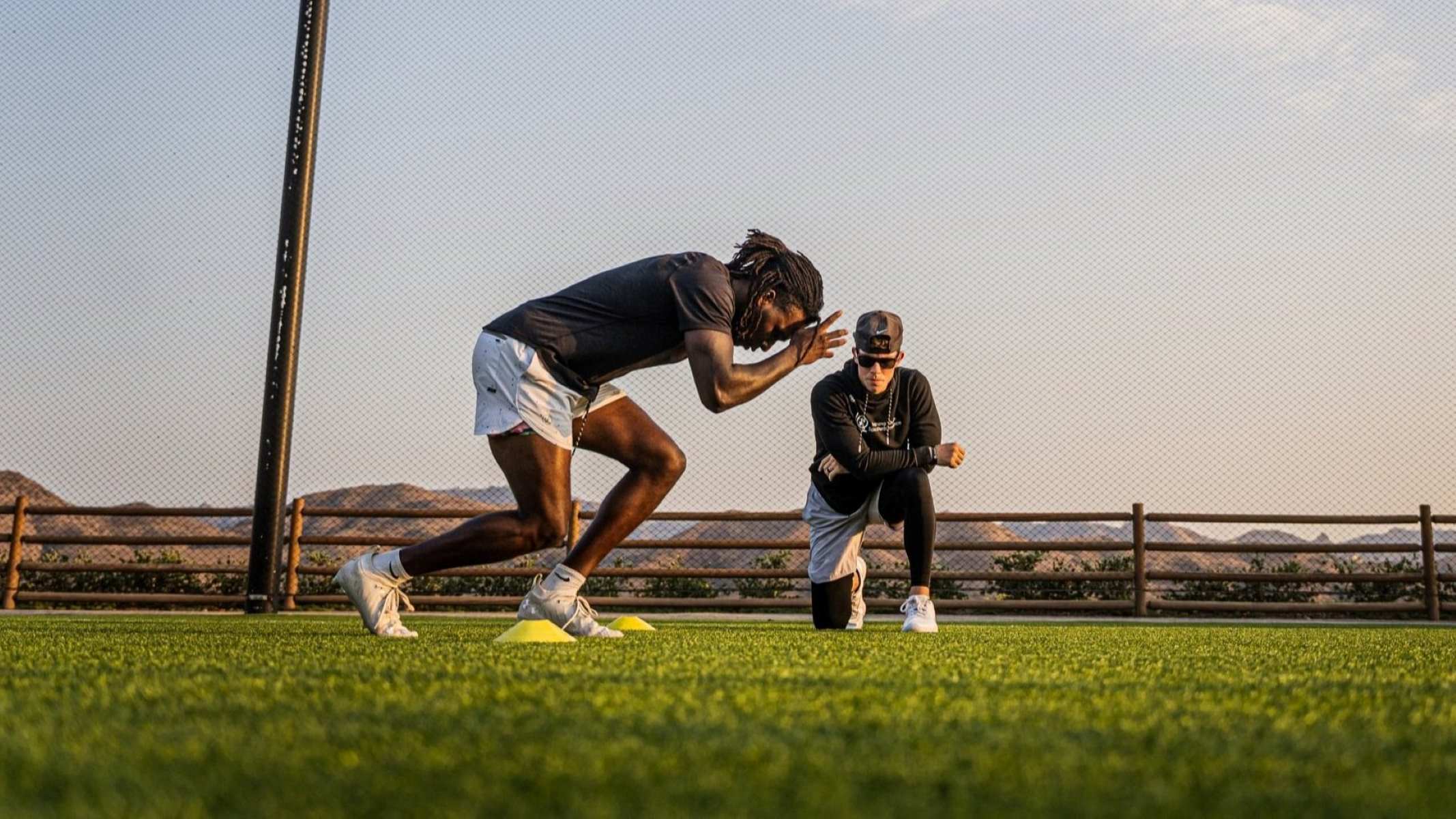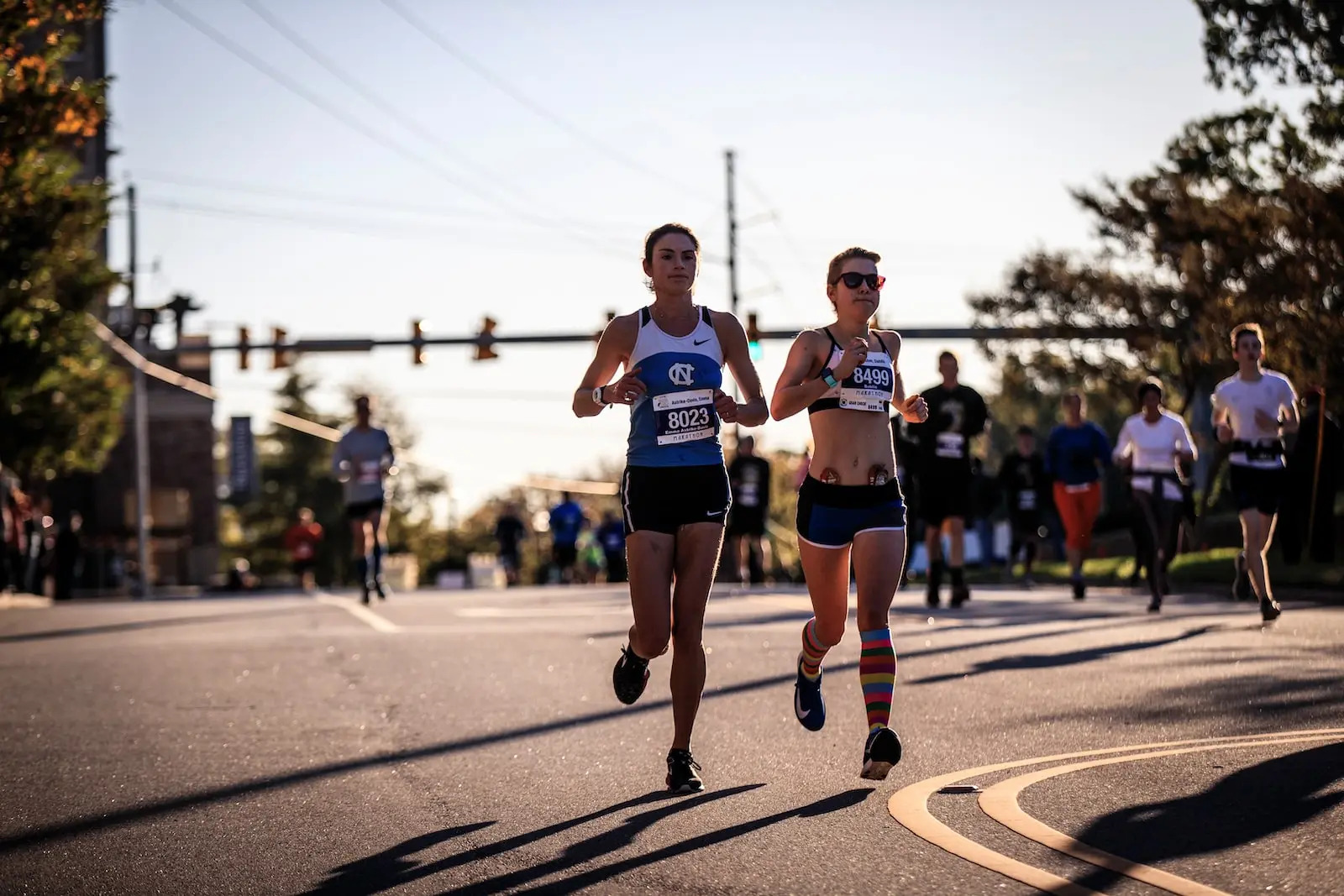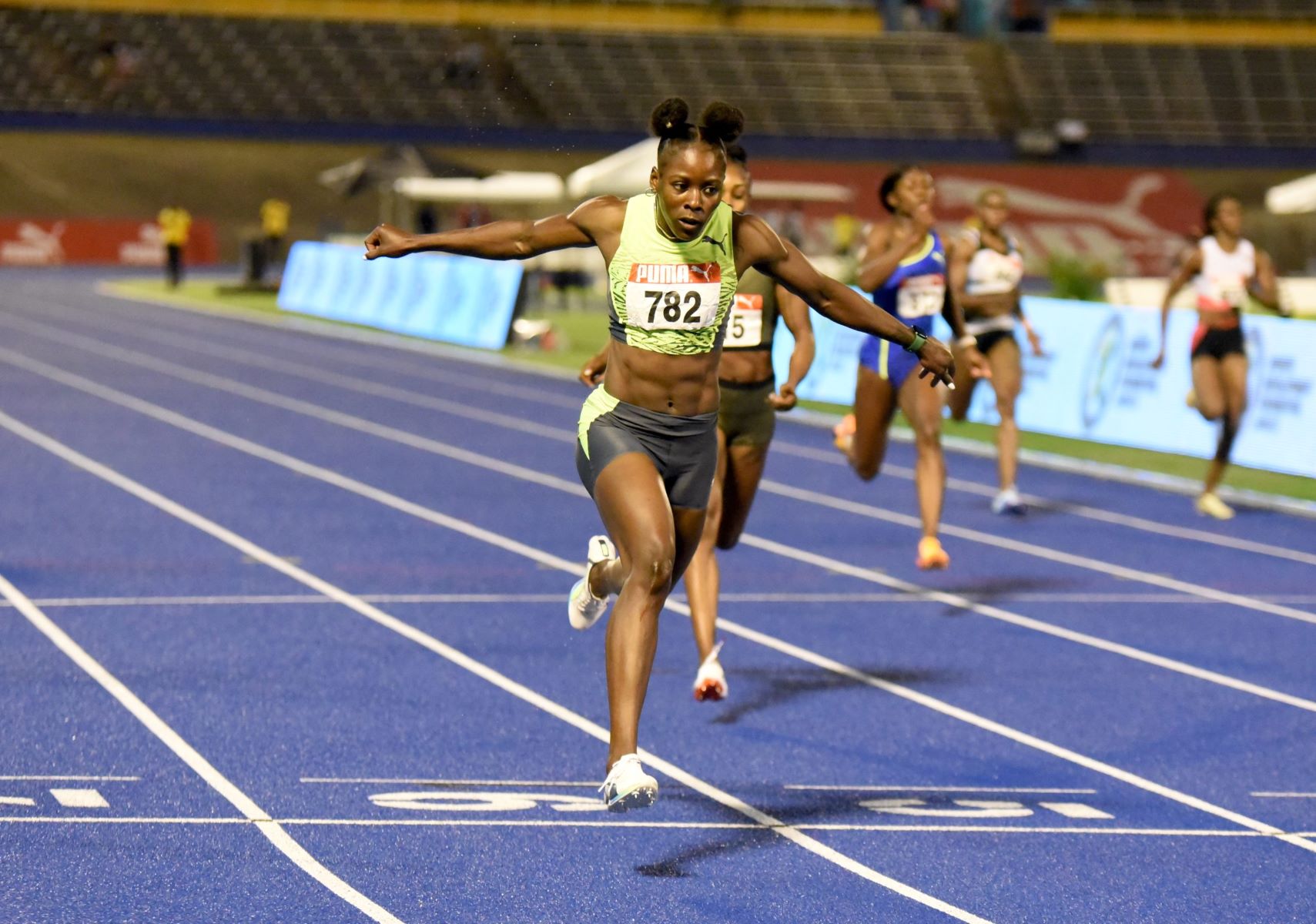Home>Misc>Featured>How To Achieve Peak Athletic Performance Training Program
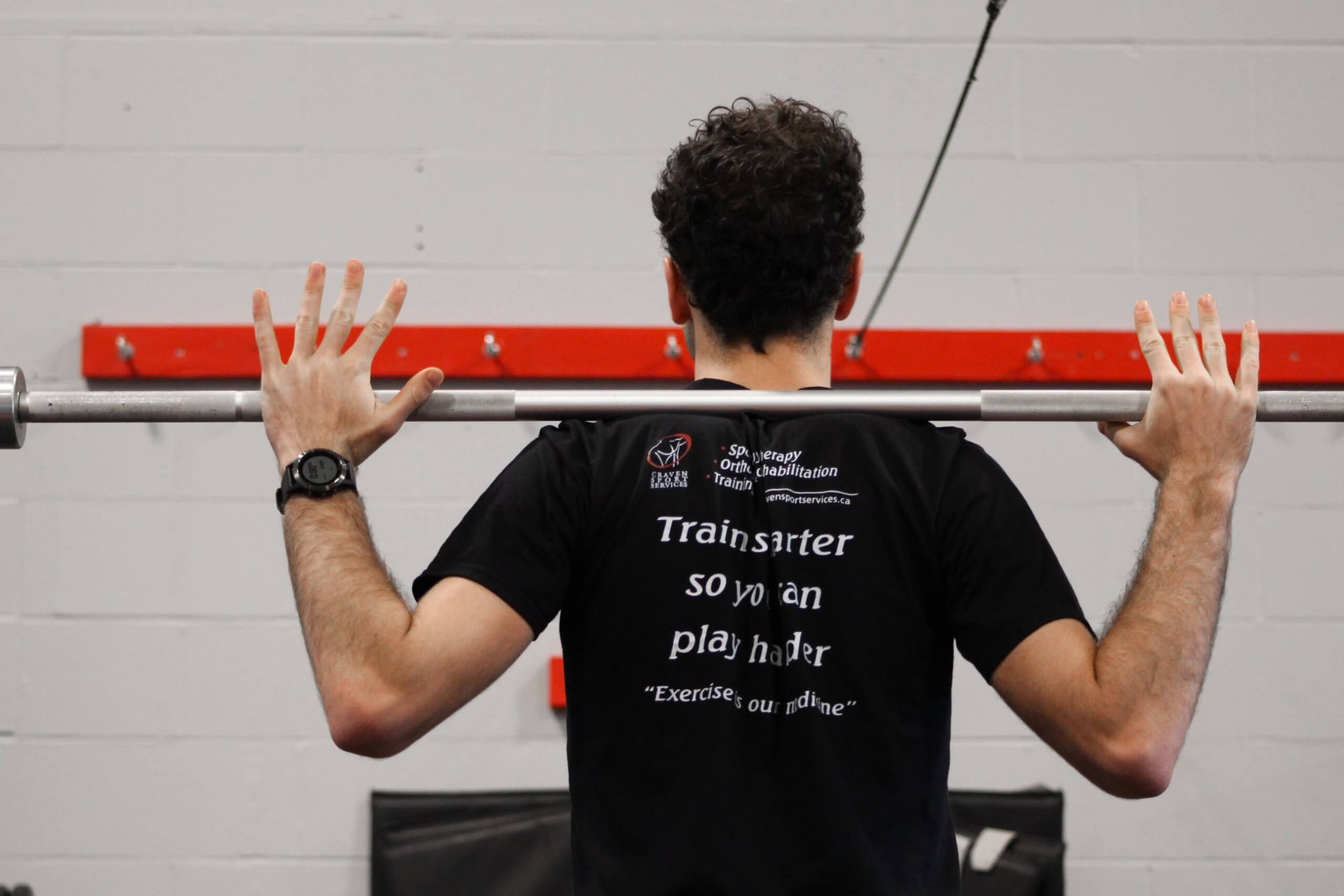

Featured
How To Achieve Peak Athletic Performance Training Program
Modified: March 1, 2024
Enhance your athletic capabilities with our cutting-edge training program, featured by top athletes. Achieve peak performance and surpass your goals.
Introduction
Achieving peak athletic performance is a goal shared by many athletes, whether they compete at the professional level or engage in recreational sports. It involves optimizing physical abilities, mental focus, and overall well-being to excel in one’s chosen sport or activity. However, reaching peak performance requires a strategic and systematic approach.
In this article, we will explore the key factors that contribute to peak athletic performance and provide insights on how to design a training program that can help athletes reach their full potential. From setting realistic goals to incorporating strength and conditioning exercises, nutrition planning, rest and recovery strategies, and mental preparation techniques, we will cover all the essential aspects of maximizing athletic performance.
Understanding the unique requirements of your sport and setting specific goals are fundamental steps in any successful athletic journey. Whether it’s improving speed, endurance, agility, or strength, defining what you want to achieve will guide you in developing a personalized training program tailored to your needs.
Once goals are established, the next step is designing an effective training program. This involves structuring training sessions, selecting appropriate exercises, and gradually increasing the intensity and volume of workouts. By following a well-designed program, athletes can progressively challenge their bodies, build strength and endurance, and improve performance over time.
In addition to physical training, proper nutrition plays a crucial role in optimizing athletic performance. Fueling the body with the right nutrients before, during, and after workouts helps maintain energy levels, support muscle recovery, and enhance overall athletic output. A balanced diet consisting of carbohydrates, proteins, healthy fats, and adequate hydration is essential for providing the necessary fuel and nutrients required for peak performance.
Rest and recovery are often overlooked but are equally important as training itself. Giving the body enough time to recover allows for muscle repair, reduces the risk of overtraining, and promotes overall performance gains. Incorporating rest days, sleep optimization, and active recovery techniques such as stretching and foam rolling are key strategies to ensure a well-rounded training program.
Understanding Athletic Performance
Athletic performance encompasses a range of physical and mental abilities that enable individuals to excel in their chosen sport or activity. It involves various factors such as strength, speed, endurance, agility, coordination, and mental focus. To optimize performance, it is crucial to understand these elements and how they interact with each other.
Strength is the foundation of athletic performance. It refers to the ability of muscles to generate force and overcome resistance. Developing strength enhances power, improves stability, and helps prevent injuries. Strength training exercises such as weightlifting, resistance training, and bodyweight exercises are essential for athletes to build a strong foundation and improve their overall performance.
Speed is another crucial component of athletic performance. It is the ability to move quickly and efficiently. Speed training involves drills and exercises aimed at improving acceleration, maximum speed, and agility. Sprinting, interval training, and plyometric exercises are commonly used to enhance speed and explosiveness.
Endurance is the body’s ability to sustain prolonged physical activities. It is especially important for sports that require continuous or repetitive movements over an extended period. Endurance training focuses on improving cardiovascular fitness, muscular endurance, and stamina. Long-distance running, cycling, swimming, and circuit training are effective methods to increase endurance.
Agility is the ability to change direction quickly and efficiently. It involves a combination of balance, coordination, and reflexes. Agility training drills such as ladder drills, cone drills, and shuttle runs enhance the body’s ability to react and move swiftly in various directions.
Mental focus and concentration are essential for peak athletic performance. The ability to stay focused, block out distractions, and maintain a positive mindset during training and competition can significantly impact an athlete’s performance. Sports psychology techniques such as visualization, goal-setting, and mindfulness exercises can help improve mental resilience and optimize performance.
Understanding the components of athletic performance is crucial for athletes and trainers when designing a comprehensive training program. By identifying the specific areas that need improvement, athletes can prioritize their training efforts and allocate the necessary time and resources to develop their strengths and address their weaknesses.
Setting Goals for Peak Performance
Setting goals is a fundamental step in achieving peak athletic performance. Well-defined goals provide direction, motivation, and a sense of purpose for athletes. They serve as a roadmap to guide training efforts and measure progress along the way. When setting goals, it is essential to make them specific, measurable, attainable, relevant, and time-bound (SMART).
Specific goals help athletes focus on a particular aspect of their performance. For example, instead of setting a general goal like “improve running,” a specific goal could be “reduce 1-minute mile time by 15 seconds.” This specificity allows athletes to direct their training efforts towards the desired outcome.
Measurable goals enable athletes to track their progress and evaluate their performance objectively. Using quantifiable metrics, such as increasing the number of pull-ups or decreasing the 5k race time by a certain percentage, provides tangible evidence of improvement and keeps athletes motivated to work towards their goals.
Attainable goals ensure that they are within reach and aligned with an athlete’s current abilities and resources. While it is important to set ambitious goals, it is equally crucial to set realistic expectations. Setting unattainable goals may lead to frustration and demotivation if they seem impossible to achieve.
Relevant goals are directly related to an athlete’s performance and align with their long-term aspirations. It is essential to set goals that are meaningful to the individual and contribute to their overall development and success in their chosen sport or activity.
Time-bound goals provide a timeframe within which an athlete aims to accomplish their objectives. This creates a sense of urgency and provides a deadline for assessing progress. Breaking long-term goals into shorter, actionable milestones can help athletes stay focused and maintain momentum.
When setting goals, it is also important to maintain a positive mindset and a growth-oriented mindset. Embracing challenges, learning from setbacks, and celebrating small wins along the way are all part of the journey towards peak performance.
In addition to setting goals related to performance outcomes, athletes should also consider setting process-oriented goals. These goals focus on the actions and behaviors necessary to achieve the desired outcome. For example, a process-oriented goal could be to complete all scheduled training sessions for the week or to incorporate a new strength exercise into the workout routine.
By setting both outcome-based and process-oriented goals, athletes can ensure a well-rounded and holistic approach to their training program. Regularly reviewing and adjusting goals based on progress and changing circumstances is also important to stay aligned with long-term aspirations and maintain motivation throughout the athletic journey.
Designing an Effective Training Program
Designing an effective training program is essential for athletes looking to achieve peak performance. A well-structured and systematic approach to training ensures that athletes progress steadily, minimize the risk of injury, and optimize their athletic capabilities. Here are some key factors to consider when designing a training program:
1. Assessing Current Fitness Level: Before designing a training program, athletes should conduct a comprehensive assessment of their current fitness level. This assessment may include measurements of strength, speed, endurance, flexibility, and body composition. Understanding areas of strengths and weaknesses helps tailor the program to address specific needs.
2. Setting Clear and Specific Goals: Clear and specific goals are crucial for structuring a training program. Athletes should identify what they want to achieve within a given timeframe and define measurable metrics to track progress. This ensures that the training program is tailored to their individual objectives.
3. Progressive Overload: Progressive overload is the principle of gradually increasing the demands placed on the body to stimulate adaptation and improvements in performance. This can be achieved through incremental increases in intensity, volume, or frequency of training. The goal is to challenge the body continuously without overwhelming it.
4. Periodization: Periodization involves dividing the training program into specific phases or cycles, each designed to focus on different aspects of performance. These phases typically include preparation, building, peaking, and recovery. By varying the intensity and volume of training throughout the program, athletes can optimize performance and prevent overtraining.
5. Variety and Specificity: A well-designed training program includes a variety of exercises and training modalities to target different aspects of performance. This helps prevent boredom, maintain motivation, and ensure a well-rounded development. Specificity is also crucial, as the training program should align with the demands of the sport or activity the athlete is training for.
6. Proper Warm-up and Cool-down: Warm-up and cool-down exercises are essential for preparing the body for physical activity and aiding in recovery. A thorough warm-up increases heart rate, increases blood flow to muscles, and enhances flexibility, reducing the risk of injury. Cool-down exercises help the body gradually return to a resting state, flush out lactic acid, and promote recovery.
7. Monitoring and Adjusting: Regular monitoring of progress is crucial in determining the effectiveness of the training program. This can be done through performance assessments, tracking metrics, and analyzing training data. Based on the results, adjustments can be made to the program to ensure continuous improvement and prevent plateaus.
8. Seeking Professional Guidance: It is beneficial for athletes to seek the guidance of qualified coaches, trainers, or sports scientists when designing a training program. These professionals can provide expert advice, ensure proper exercise technique, and address individual needs and circumstances.
By incorporating these principles into the design of a training program, athletes can optimize their training efforts and work towards achieving peak performance in their chosen sport or activity.
Strength and Conditioning Exercises
Strength and conditioning exercises are essential components of a well-rounded training program aimed at achieving peak athletic performance. These exercises focus on building strength, power, endurance, and mobility, helping athletes improve overall physical capabilities and excel in their chosen sport or activity. Here are some key exercises to consider:
1. Resistance Training: Resistance training involves using external resistance such as weights, resistance bands, or bodyweight to challenge the muscles. Exercises like squats, deadlifts, bench press, pull-ups, and lunges are effective for building overall strength and muscle development. It is important to focus on proper form and gradually increase the resistance over time.
2. Plyometric Exercises: Plyometric exercises are explosive movements that involve rapid stretching of muscles followed by a powerful contraction, enhancing power and explosiveness. Jump squats, box jumps, medicine ball throws, and plyometric push-ups are examples of plyometric exercises that improve athletic performance by increasing muscle power and coordination.
3. Core Strengthening: A strong core plays a vital role in athletic performance as it provides stability and enhances overall movement efficiency. Exercises such as planks, Russian twists, bicycle crunches, and stability ball exercises help strengthen the abdominal muscles, obliques, and lower back, improving balance and reducing the risk of injury.
4. Agility and Speed Drills: Agility and speed drills are crucial for sports that require quick changes in direction and rapid acceleration. Cone drills, ladder drills, shuttle runs, and agility ladder exercises improve agility, footwork, and coordination, enhancing an athlete’s ability to react and move swiftly during competition.
5. Endurance Training: Endurance training focuses on building cardiovascular fitness and muscular endurance, allowing athletes to sustain prolonged physical activity. Activities such as long-distance running, cycling, swimming, or circuit training help improve cardiovascular capacity, increase endurance, and enhance overall stamina.
6. Flexibility and Mobility Exercises: To optimize athletic performance and prevent injuries, it is crucial to maintain proper flexibility and mobility. Dynamic stretching, foam rolling, yoga, and mobility exercises improve joint range of motion, muscle elasticity, and overall flexibility, allowing for more efficient movement and reducing the risk of muscle imbalances.
7. Functional Training: Functional training mimics the movements and demands of sports-specific activities. It focuses on improving overall strength, stability, and coordination required for athletic performance. Exercises such as kettlebell swings, medicine ball rotations, and TRX suspension training are examples of functional training exercises that enhance full-body functional strength.
When incorporating strength and conditioning exercises into a training program, it is essential to consider proper form, progression, and individualization. Gradually increasing the intensity and volume of exercises, focusing on proper technique, and tailoring the program to an athlete’s specific needs and goals will yield the best results.
Working with a qualified strength and conditioning coach or personal trainer can provide guidance, ensure proper exercise selection, and help athletes maximize their training efforts. Remember to listen to your body, allow for adequate rest and recovery, and seek professional advice when needed to optimize performance and minimize the risk of injury.
Proper Nutrition for Performance
Proper nutrition is paramount for achieving peak athletic performance. Fueling the body with the right nutrients and maintaining optimal hydration levels not only enhances energy levels but also supports muscle recovery, prevents fatigue, and improves overall athletic output. Here are key considerations for optimizing nutrition for performance:
1. Macronutrients: Athletes should ensure they consume an appropriate balance of macronutrients – carbohydrates, proteins, and fats. Carbohydrates provide energy for physical activity and should make up a significant portion of an athlete’s diet. Good sources include whole grains, fruits, and vegetables. Proteins are essential for muscle repair and growth and can be obtained from lean meats, fish, dairy products, and plant-based sources like legumes and tofu. Healthy fats from sources like avocados, nuts, and olive oil provide sustainable energy and support hormone production.
2. Timing of Meals: Timing meals and snacks around training sessions is crucial for optimal performance. Eating a balanced meal containing carbohydrates and protein 2-3 hours before exercise provides sustained energy. Consuming a light snack rich in carbohydrates and protein 30-60 minutes before exercise ensures immediate fuel availability. Post-exercise, consuming a combination of carbohydrates and protein within 30 minutes helps replenish glycogen stores and aids in muscle recovery.
3. Hydration: Proper hydration is key for maintaining performance and preventing dehydration. Athletes should aim to drink enough fluids throughout the day to stay adequately hydrated. During exercise, particularly in hot and humid conditions, it’s important to drink water or sports drinks to replace fluids lost through sweat. Monitoring urine color is a simple but effective way to gauge hydration levels – pale yellow urine indicates proper hydration.
4. Micronutrients: A well-rounded diet rich in fruits, vegetables, whole grains, and lean proteins provides essential vitamins and minerals necessary for optimal performance. Adequate intake of vitamin C, vitamin D, iron, calcium, and magnesium is particularly important as they play critical roles in energy production, muscle function, and bone health.
5. Supplements: While a balanced diet should ideally provide all necessary nutrients, some athletes may benefit from certain supplements. Consulting with a sports dietitian or healthcare professional can help determine if supplements such as protein powder, creatine, omega-3 fatty acids, or multivitamins are appropriate for specific needs.
6. Recovery Nutrition: After intense exercise, consuming a combination of carbohydrates and protein helps replenish glycogen stores and promotes muscle repair. Chocolate milk, protein shakes, or a combination of whole foods like chicken and sweet potatoes are excellent options for post-training recovery nutrition.
7. Personalization: Nutrition needs vary based on individual factors such as body composition, training intensity, type of sport, and personal preferences. Working with a sports dietitian can help athletes develop personalized meal plans that address specific nutrient requirements and performance goals.
Proper nutrition is an ongoing process that requires attention and adjustment. Monitoring food intake, assessing performance, and making necessary modifications help athletes optimize their nutrition for peak performance and overall well-being. Consistency, balanced eating, and listening to the body’s cues are key to achieving optimal athletic performance through nutrition.
Importance of Rest and Recovery
Rest and recovery are critical components of any training program aiming for peak athletic performance. While it may be tempting to push the body to its limits through intense training, neglecting rest can actually hinder progress and increase the risk of injury. Here’s why rest and recovery are so important:
1. Muscle Repair and Growth: During a workout, muscles experience microscopic damage. Rest allows the body to repair this damage, leading to muscle growth and increased strength. Without adequate rest, the body doesn’t have time to rebuild and adapt, which can result in overuse injuries and stalled progress.
2. Prevention of Overtraining: Overtraining syndrome occurs when an athlete does not allow for sufficient recovery time, leading to chronic fatigue, decreased performance, and increased susceptibility to illness and injury. Rest days and planned recovery periods are crucial for avoiding overtraining and maintaining optimal physical and mental health.
3. Energy Restoration: Frequent intense training sessions can deplete glycogen stores and leave the body in a state of fatigue. Adequate rest allows for replenishment of energy stores, ensuring athletes have the required energy to sustain performance during workouts and competitions.
4. Mental Rejuvenation: Rest and recovery are not only physical but also mental. Intense training can be mentally draining, increasing the risk of burnout and loss of motivation. Rest allows athletes to recharge mentally, regain focus, and maintain a positive mindset, which are crucial for long-term success.
5. Injury Prevention: Fatigue and overuse are major contributors to sports-related injuries. Giving the body time to recover reduces the risk of overuse injuries, stress fractures, and muscular imbalances. Additionally, rest allows for identification and correction of movement patterns or weaknesses that may lead to injuries if left unaddressed.
6. Sleep Optimization: Adequate sleep is an essential aspect of rest and recovery. During sleep, the body undergoes various physiological processes, including hormone regulation, tissue repair, and memory consolidation. Aim for 7-9 hours of quality sleep per night to support optimal performance and recovery.
7. Active Recovery: Active recovery involves engaging in low-intensity activities to promote blood flow, reduce muscle soreness, and aid in recovery. Light aerobic exercises, yoga, foam rolling, and stretching are examples of active recovery techniques that help enhance overall recovery and prevent muscle stiffness.
It’s important to note that rest does not mean complete inactivity. Active rest, which includes low-intensity activities, may be more beneficial than complete sedentary rest. Every athlete is unique, and finding the right balance between training and rest may require adjustments based on individual needs, training intensity, and competition schedule.
By prioritizing rest and recovery, athletes allow their bodies to adapt to training stimuli, reduce the risk of burnout and injury, and ultimately improve performance. Incorporating regular rest days, implementing active recovery techniques, and listening to the body’s signals are crucial for achieving peak athletic performance.
Mental Preparation and Focus
Mental preparation and focus are vital components of achieving peak athletic performance. While physical training is essential, the mind plays a critical role in determining an athlete’s ability to perform under pressure, maintain concentration, and overcome mental barriers. Here are some key factors to consider when it comes to mental preparation and focus:
1. Visualization: Visualization is a powerful technique that involves creating mental images of successful performance. By vividly imagining themselves executing specific skills or achieving desired outcomes, athletes can enhance confidence, improve technique, and reinforce positive beliefs. Regular visualization can help athletes develop a mental blueprint for success.
2. Goal Setting: Setting clear and specific goals is not only important for physical training but also for mental preparation. By setting realistic and attainable goals, athletes can keep their focus, measure progress, and maintain motivation. Breaking down long-term goals into smaller milestones enables athletes to track their progress and celebrate achievements along the way.
3. Positive Self-Talk: The way athletes talk to themselves has a significant impact on their mindset and performance. Positive self-talk involves using affirming and encouraging statements to boost confidence and motivation. By replacing negative thoughts or doubts with positive and empowering ones, athletes can build mental resilience and maintain a strong mindset in challenging situations.
4. Focus and Concentration: Maintaining focus is essential for performing optimally. Techniques such as mindfulness and deep breathing exercises can help athletes improve concentration, clear the mind of distractions, and stay in the present moment. In addition, creating pre-performance routines or rituals can help athletes enter a focused state of mind before practices or competitions.
5. Emotional Regulation: Controlling and channeling emotions effectively is crucial for peak performance. Recognizing and understanding emotions, such as nerves or excitement, allows athletes to manage them and prevent them from interfering with performance. This can be achieved through techniques such as relaxation exercises, visualization, and positive self-talk.
6. Resilience and Adaptability: Sports often present unexpected challenges or setbacks. Building resilience and the ability to adapt to changing circumstances is essential for maintaining mental well-being and performance. Developing a growth mindset, embracing challenges, and seeing failures as learning opportunities can help athletes bounce back stronger and maintain focus on long-term goals.
7. Mental Recovery: Just as the body needs physical recovery, the mind also requires rest and recovery. Taking breaks, engaging in activities outside of training, and practicing relaxation techniques help recharge the mind and prevent mental burnout. Balancing training with hobbies, socializing, and downtime contributes to overall mental well-being.
8. Seeking Professional Support: Sports psychologists and mental performance coaches specialize in helping athletes enhance their mental skills and overcome mental barriers. Engaging with these professionals can provide valuable guidance and support in developing mental preparation strategies tailored to individual needs.
Mental preparation and focus are essential for athletes looking to optimize their performance. By incorporating mental techniques into their training and competition routines, athletes can develop a strong mindset, improve concentration, and overcome mental obstacles, ultimately unlocking their full potential.
Injury Prevention and Rehabilitation
Injury prevention and rehabilitation are crucial aspects of maintaining peak athletic performance. Injuries not only impact an athlete’s ability to train and compete but can also have long-term consequences on their overall well-being. Here are key considerations for preventing injuries and facilitating effective rehabilitation:
1. Warm-up and Cool-down: Proper warm-up before exercise and cool-down afterward are essential for injury prevention. A dynamic warm-up involving stretching, mobility exercises, and light aerobic activity prepares the body for physical exertion, increases blood flow, and improves flexibility. Cooling down with static stretching and gentle movements helps gradually bring heart rate and breathing back to a resting state.
2. Strength and Conditioning: A well-designed strength and conditioning program helps create a foundation of strength, stability, and flexibility, lowering the risk of injuries. Building muscular strength around joints, improving balance, and addressing muscle imbalances contribute to better movement mechanics and reduce the likelihood of strains, sprains, and overuse injuries.
3. Proper Technique: Ensuring proper technique during sports-specific movements and exercises is essential for injury prevention. Working with coaches or trainers who can provide guidance on correct form, alignment, and movement patterns can help avoid unnecessary stress on joints and soft tissues.
4. Gradual Progression: Gradual and progressive training advances help the body adapt to increasing demands and minimize the risk of overuse injuries. Implementing appropriate rest days, working on incremental increases in intensity, duration, or volume, and allowing for recovery are crucial for maintaining balance and avoiding overtraining.
5. Injury Assessment and Treatment: Prompt assessment and treatment of injuries are crucial for effective rehabilitation. Seeking the advice of healthcare professionals, such as sports physicians or physiotherapists, ensures precise diagnosis and timely intervention, optimizing the recovery process.
6. Rehabilitation Exercises: Following an injury, rehabilitation exercises are essential to regain strength, improve mobility, and restore functional movement patterns. These exercises are tailored to the specific injury and focus on rebuilding muscle strength, stability, and coordination.
7. Progress Monitoring: Regularly monitoring progress is important to track improvements and adjust rehabilitation protocols accordingly. This can include assessing range of motion, strength testing, and functional movement assessments to ensure a safe and effective return to sport.
8. Rest, Recovery, and Modification: Adequate rest and recovery are essential during the rehabilitation process. It is crucial to listen to the body’s signals and not rush the recovery timeline to avoid reinjury. Modifying training or activity levels as required and gradually reintroducing sports-specific movements help minimize the risk of reinjury.
9. Injury Prevention Programs: Participating in injury prevention programs specific to the sport or activity can significantly reduce the risk of common injuries. These programs often include exercises targeting key muscle groups, mobility routines, balance training, and education on proper injury management and prevention strategies.
10. Nutritional Support: Proper nutrition plays a vital role in healing and recovery. A diet rich in nutrients, antioxidants, and protein contributes to tissue repair and supports the body’s immune system. Consulting with a sports dietitian can help develop personalized dietary strategies to optimize healing and prevent future injuries.
Injury prevention should be a priority for athletes, as it is more effective and efficient than rehabilitation. Incorporating proper warm-up and cool-down routines, following safe and progressive training protocols, seeking professional guidance when needed, and maintaining overall physical health and fitness are essential for preventing injuries and enjoying sustained peak athletic performance.
Monitoring Performance Progress
Monitoring performance progress is an essential aspect of achieving and maintaining peak athletic performance. Regular evaluation and tracking of performance metrics provide valuable insights into an athlete’s strengths, weaknesses, and overall progress. Here are key considerations for effectively monitoring performance progress:
1. Performance Assessments: Conducting regular performance assessments provides baseline data and allows for comparison over time. These assessments can include measurements of speed, endurance, strength, power, agility, and other sport-specific metrics. Objective data gathered from assessments allows athletes to track improvements and identify areas that need further development.
2. Training Logs: Keeping detailed training logs allows athletes to record workouts, track progress, and gain insights into their training patterns. This includes documenting the exercises performed, sets, reps, weights, and any notes on the difficulty or perceived effort. Training logs help identify trends, set goals, and make informed decisions regarding adjustments to training programs.
3. Technology and Wearable Devices: Advances in technology and wearable devices have made it easier than ever to monitor performance. Fitness trackers, heart rate monitors, GPS devices, and mobile apps provide real-time feedback on metrics such as heart rate, distance, pace, and duration. Analyzing this data can help athletes understand their performance patterns and make adjustments to optimize training and recovery.
4. Subjective Feedback: Subjective feedback from athletes regarding how they feel during training and competition is important as well. Athletes should pay attention to factors such as energy levels, perceived exertion, motivation, and overall well-being. Regular communication with coaches, trainers, and teammates can provide valuable insights to support performance evaluation and decision-making.
5. Adjusting Training Intensity: Monitoring performance progress allows athletes and coaches to adjust training intensity based on the feedback and data collected. This includes modifying training volume, increasing the resistance or difficulty level of exercises, or implementing new training methods. Gradual and strategic adjustments help athletes continue to make progress while avoiding overtraining or excessive stress on the body.
6. Periodic Check-Ins: Regular check-ins with coaches, trainers, or sports scientists can provide expert guidance, feedback, and support in monitoring performance progress. These interactions allow athletes to discuss their goals, address concerns, and receive valuable advice on training modifications or adjustments.
7. Mental and Emotional Well-being: Monitoring performance progress is not only about physical metrics but also mental and emotional well-being. Assessing an athlete’s mindset, motivation, and overall satisfaction with their training and performance is crucial. Addressing mental and emotional factors that may impact performance is just as important as tracking physical progress.
8. Celebrating Milestones: Recognizing and celebrating milestones and achievements along the way are important aspects of monitoring performance progress. Acknowledging improvements, personal records, or overcoming hurdles boosts motivation, enhances confidence, and provides a sense of accomplishment.
By actively monitoring performance progress through objective assessments, subjective feedback, and regular communication with coaches and trainers, athletes can gain valuable insights into their development. This enables them to make informed decisions, set new goals, and modify their training programs effectively to continue on the path of achieving and maintaining peak athletic performance.
Conclusion
Achieving peak athletic performance requires a comprehensive approach that encompasses physical training, proper nutrition, mental preparation, injury prevention, and continuous monitoring. By understanding the key components of athletic performance and applying effective strategies, athletes can optimize their training efforts and unlock their full potential.
Setting clear and specific goals, designing an effective training program, and incorporating strength and conditioning exercises are fundamental steps in the pursuit of peak performance. Proper nutrition, hydration, and rest are essential for fueling the body, aiding recovery, and maintaining optimal performance levels.
Mental preparation, focus, and resilience play a crucial role in pushing oneself beyond limits, overcoming obstacles, and achieving optimal performance outcomes. Monitoring performance progress through objective assessments, training logs, technology, and subjective feedback provides valuable insights for athletes to track progress, identify areas for improvement, and make necessary adjustments.
Injury prevention and rehabilitation are vital for maintaining peak performance and minimizing the risk of setbacks. Ensuring proper warm-up, cool-down, technique, and gradual progression are key factors in preventing injuries. Monitoring and addressing mental and emotional well-being are also important aspects of maintaining overall performance levels.
Ultimately, achieving peak athletic performance is a continuous journey that requires dedication, perseverance, and a holistic approach. It is important to remember that each athlete is unique, and finding a balance between training, rest, and recovery is crucial for long-term success.
By applying the principles outlined in this article and seeking guidance from qualified professionals when needed, athletes can maximize their potential, consistently improve performance, and enjoy sustained success in their chosen sport or activity.
